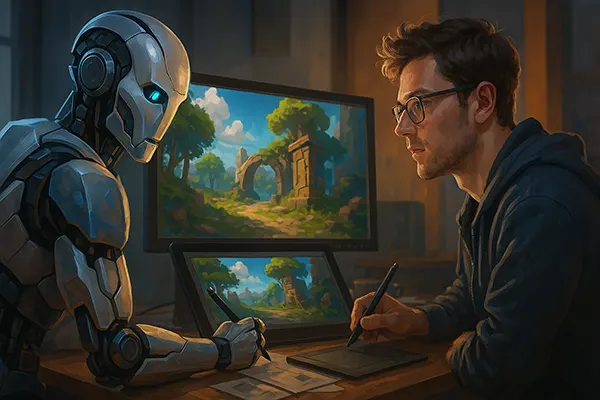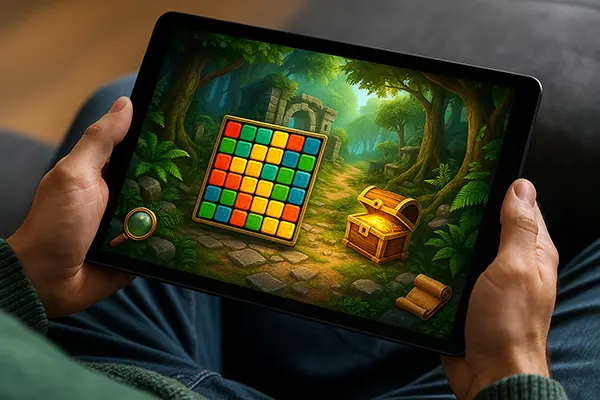
How AI Is Transforming Content Creation and Game Design: What Awaits Writers and Game Designers
Artificial intelligence has become a key element in shaping creative industries, particularly in writing and game design. As of 2025, generative models such as GPT-5, DALL·E 3, and Stable Diffusion are not just tools but active creative partners. They can generate narratives, characters, dialogues, and visual concepts with remarkable precision. This evolution changes the role of human authors — from content producers to curators, editors, and creative directors who work alongside AI to enhance originality and emotional depth.
The Rise of Generative Models in Creative Processes
Today, AI systems are capable of creating complex stories and scenarios for games. Models such as GPT-5 and Claude 3 are often used in studios to develop dialogue trees and non-linear narratives. Instead of manually scripting every line, writers now train and guide models to adapt tone, motivation, and narrative consistency to the world of the game. This allows studios to build richer, more dynamic storytelling experiences.
In visual design, DALL·E 3, Midjourney, and Stable Diffusion XL have become essential tools for concept artists. These models generate multiple visual references in minutes, helping designers quickly test different environments, character styles, or lighting scenarios. The process of prototyping has become more efficient, giving creative teams more time for polishing gameplay and player experience. For instance, resources available on https://puzzlegamesforpc.com/ show how AI-driven creativity can enhance interactive content and inspire developers to blend imagination with innovation.
AI also influences music and sound production. Tools like AIVA and Mubert compose adaptive soundtracks that change based on player actions. The result is a more immersive experience that responds to emotion, rhythm, and tension in real time — a milestone that redefines the relationship between sound and storytelling.
Benefits and Risks of AI Integration
The main advantage of AI lies in automating repetitive work. Writers no longer waste time on generating standard dialogue or quest descriptions, while artists can avoid drawing dozens of similar concepts. This gives professionals more room for genuine creativity and innovation. For independent developers, AI also lowers entry barriers, allowing small teams to compete with large studios.
However, automation introduces serious ethical and professional challenges. The most pressing issue is the loss of uniqueness and authorship. Since AI often relies on large datasets, its results may unintentionally reproduce existing patterns or even elements from copyrighted works. Questions about ownership and creative responsibility remain unresolved in many jurisdictions, forcing studios to develop new legal and ethical policies.
Another concern is the homogenisation of style. When too many creators rely on similar models, content risks becoming predictable. Maintaining diversity and originality requires human intervention — a personal touch that reflects the author’s vision and experience.

How Companies Are Using AI in 2025
Major game studios such as Ubisoft, Blizzard, and CD Projekt RED are actively integrating AI tools into production pipelines. Ubisoft’s Ghostwriter system, for instance, helps generate background NPC dialogue. It doesn’t replace writers but supports them by producing drafts that are then refined by humans. This collaboration model has proven highly effective for maintaining quality while accelerating production.
Indie developers are also adopting accessible tools like ChatGPT and Leonardo AI for storyboarding, marketing texts, and environmental concepts. These instruments make high-quality production available to teams with limited budgets. The democratisation of AI technology ensures that innovation no longer depends solely on financial resources but also on creative strategy.
Outside of development, content marketing and localisation departments use AI to adapt texts and promotional materials for different languages and audiences. As a result, game launches have become truly global — with tone, humour, and cultural nuances adjusted in real time through AI-assisted editing.
Adapting Skills for the Future
Writers and designers must now focus on developing hybrid competencies. Understanding AI prompts, data ethics, and model fine-tuning is becoming as important as mastering storytelling or composition. The ability to control AI output — to guide it creatively rather than depend on it — is the new definition of professionalism in 2025.
Collaboration between humans and machines demands soft skills as well. Empathy, cultural awareness, and creative intuition remain irreplaceable. These qualities ensure that the human element continues to add meaning and authenticity to AI-generated works. The goal is not to outcompete machines but to merge analytical precision with emotional intelligence.
Ultimately, AI will not eliminate the role of writers or designers — it will elevate it. Those who learn to orchestrate AI as part of their creative process will shape the next generation of storytelling, where imagination meets technology in perfect balance.




